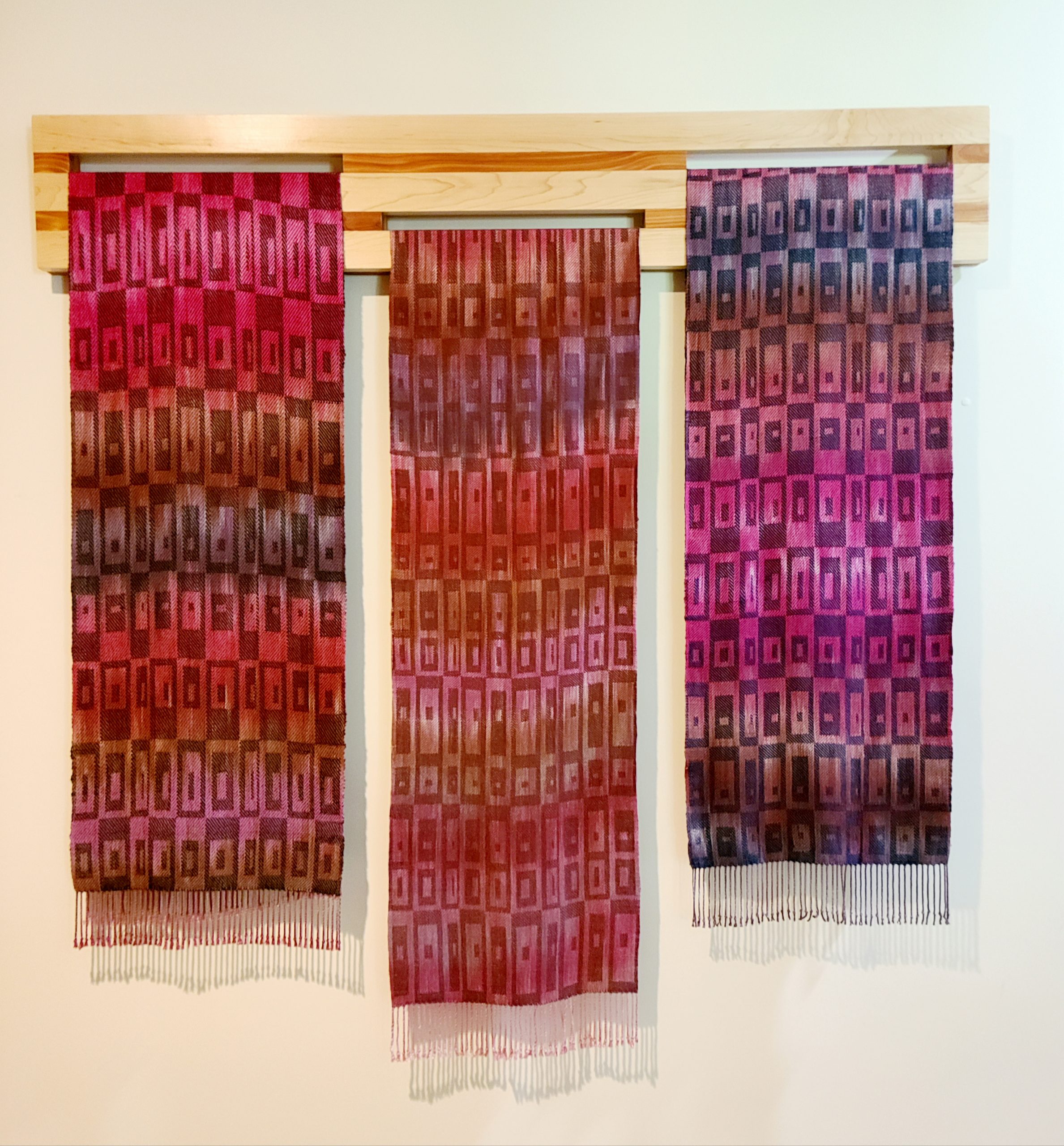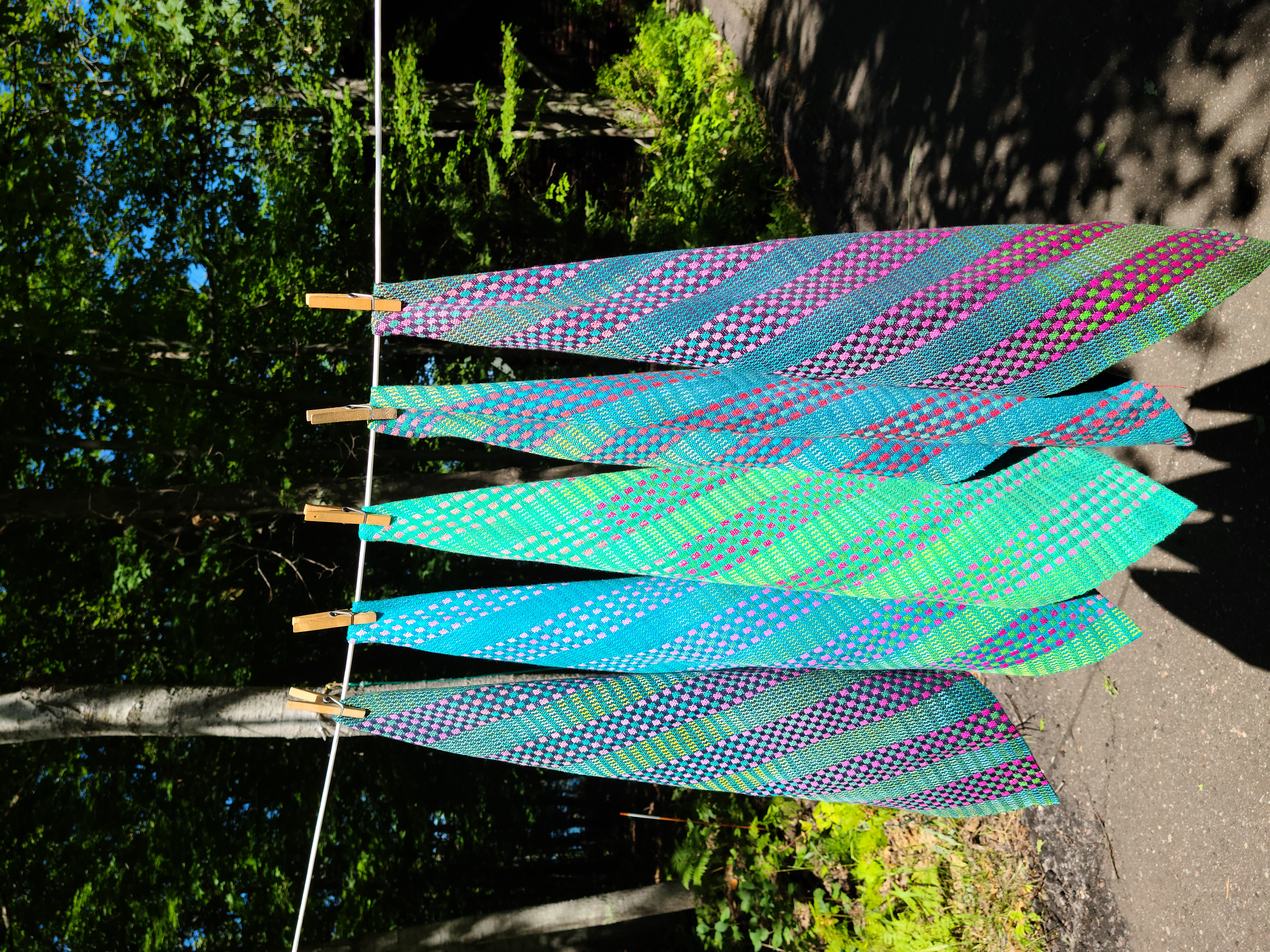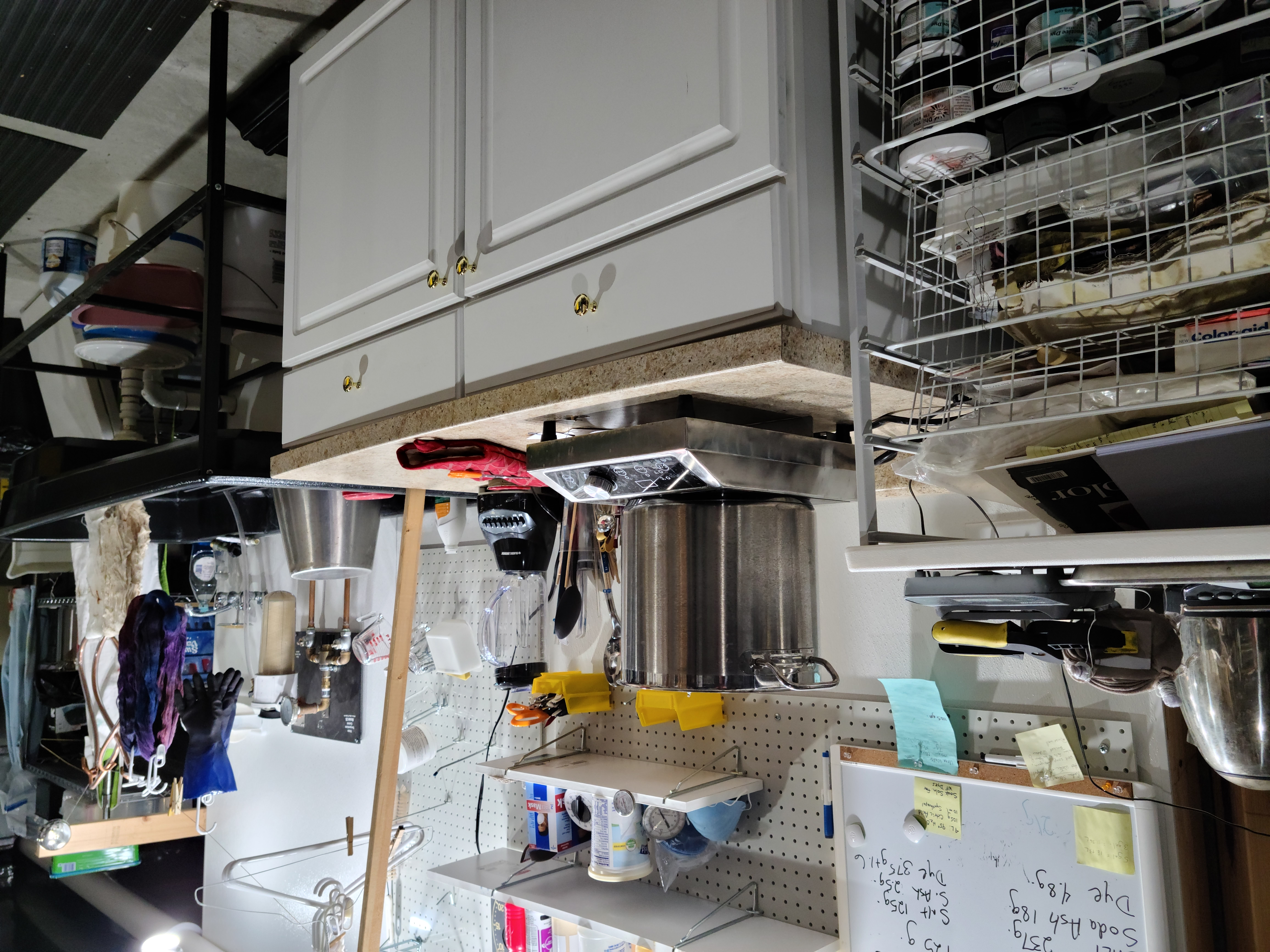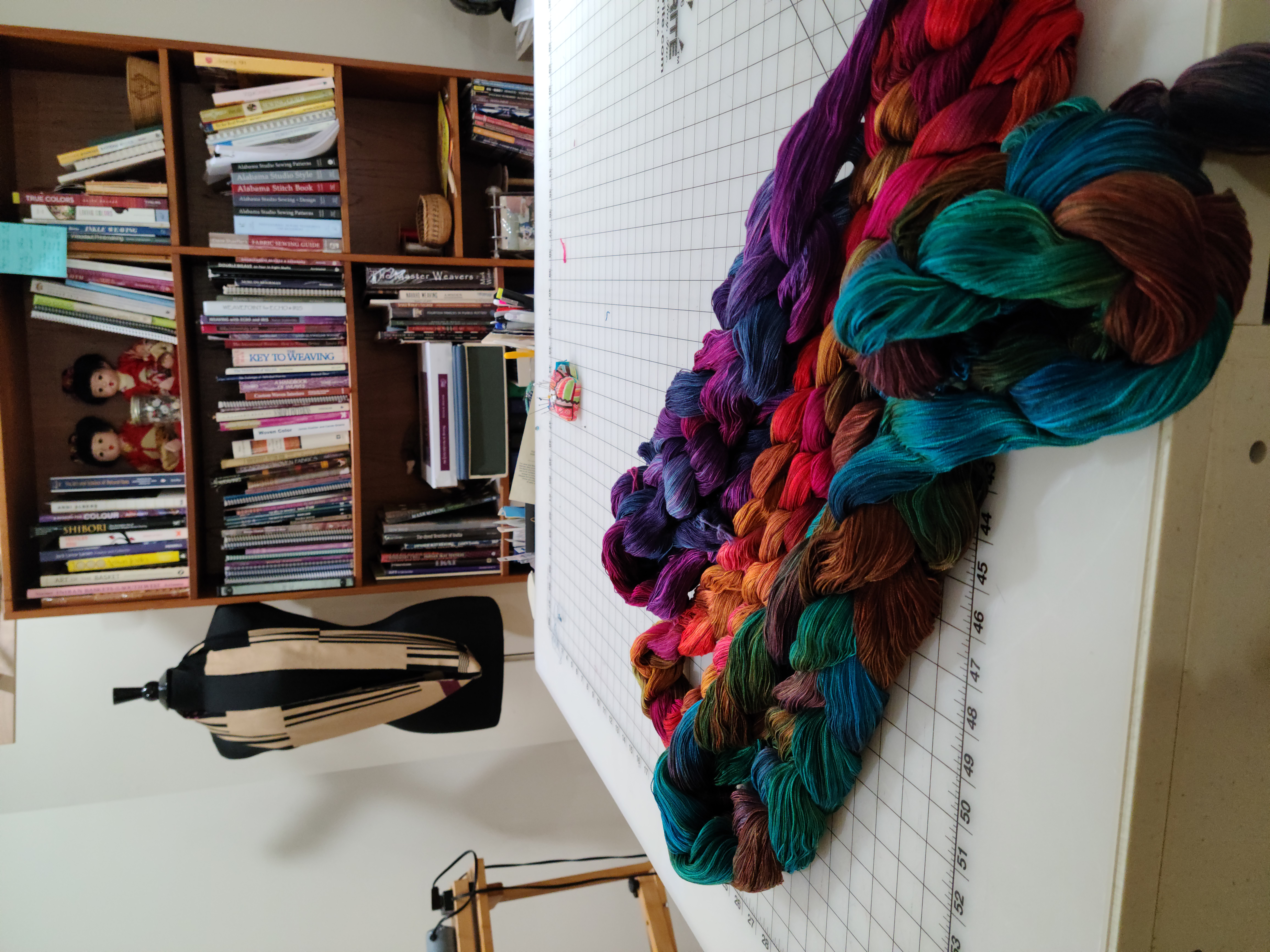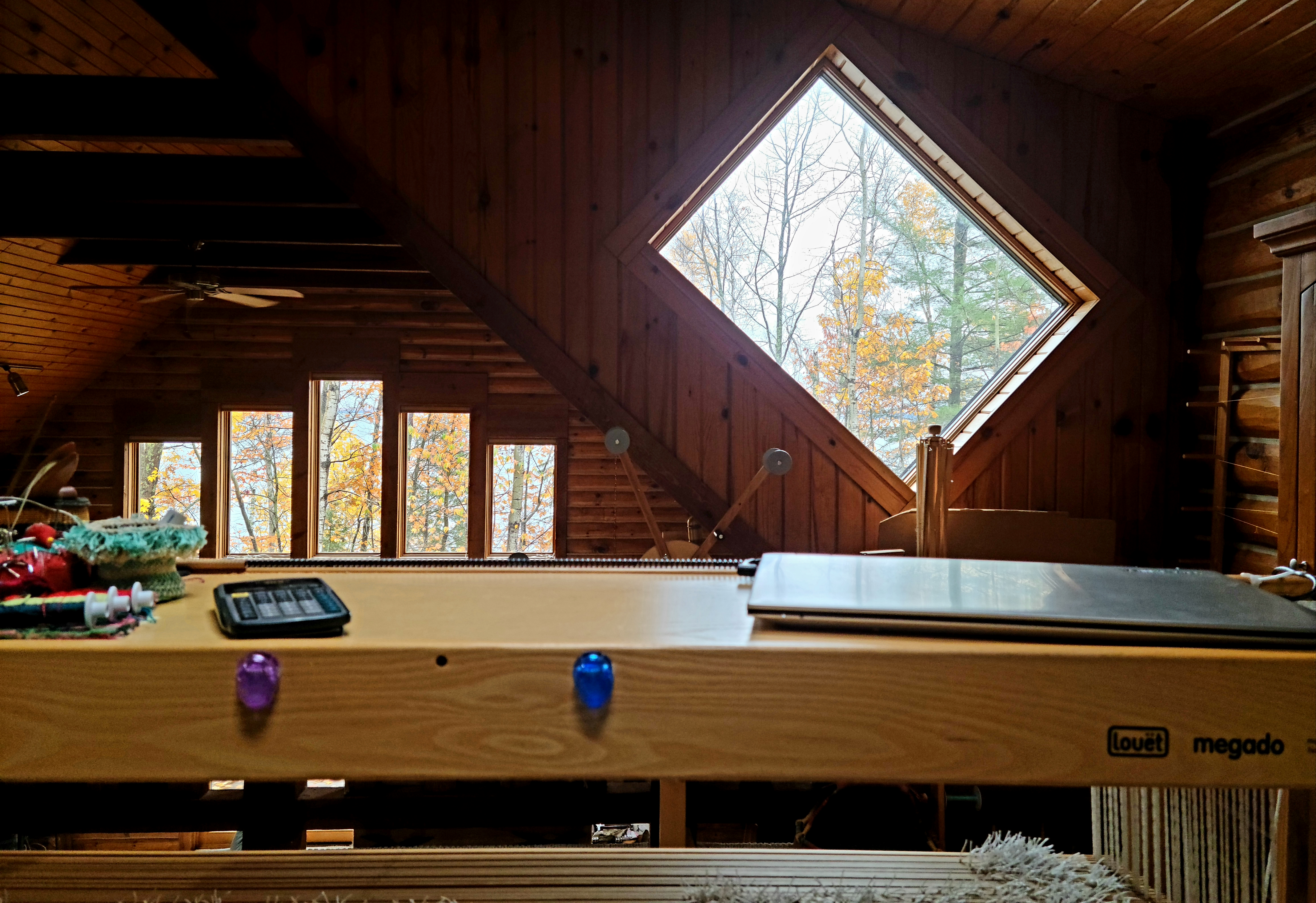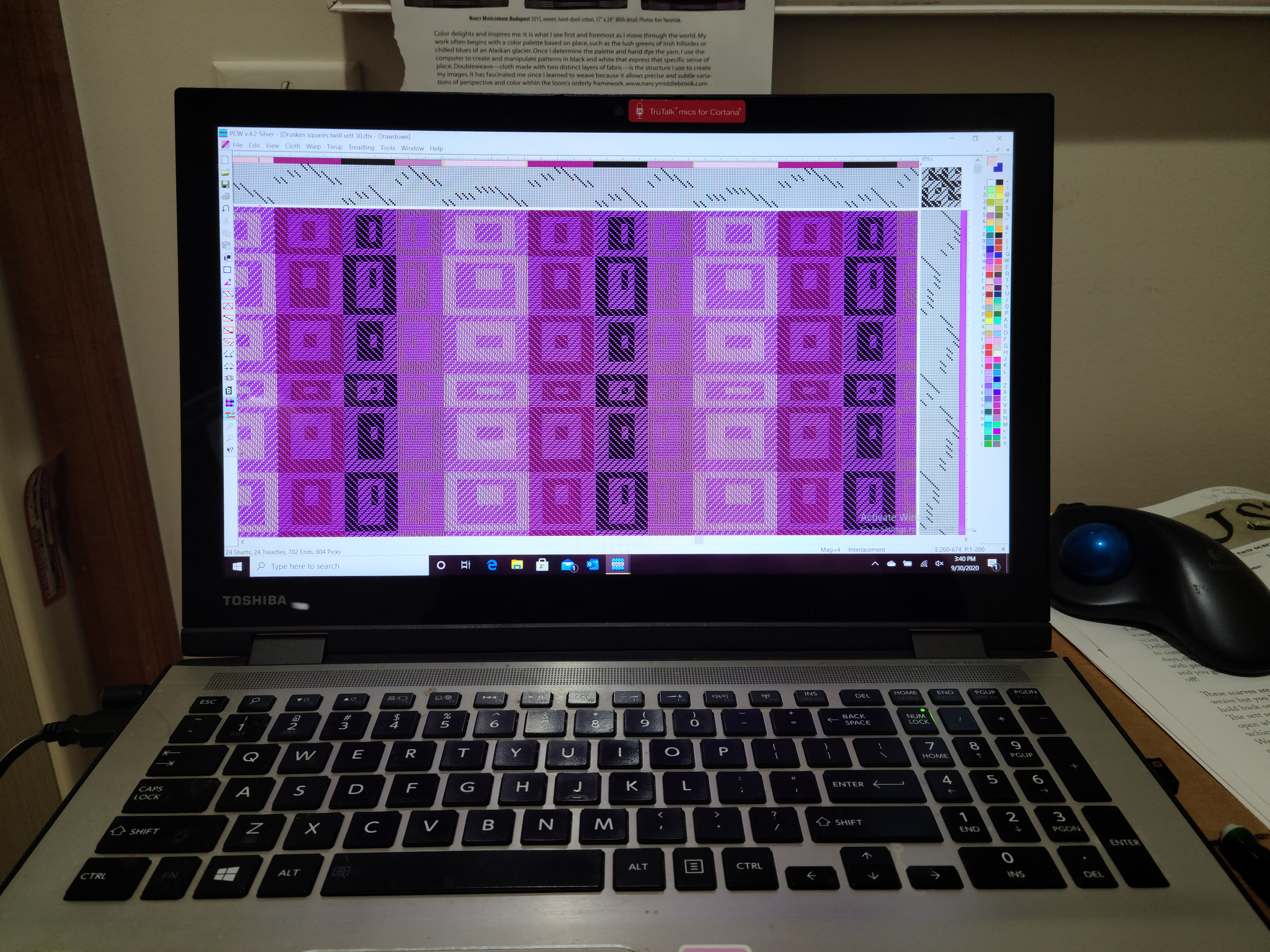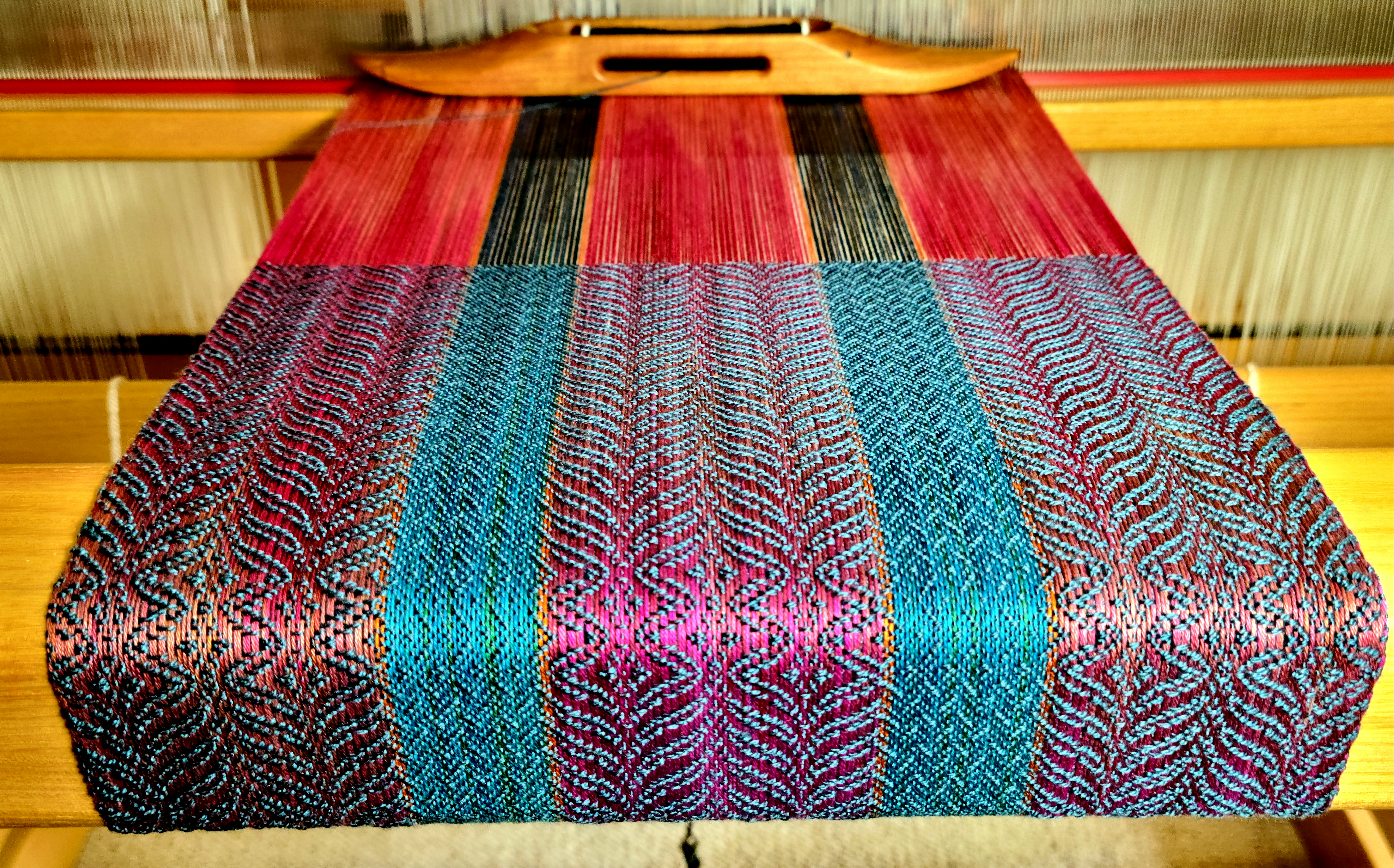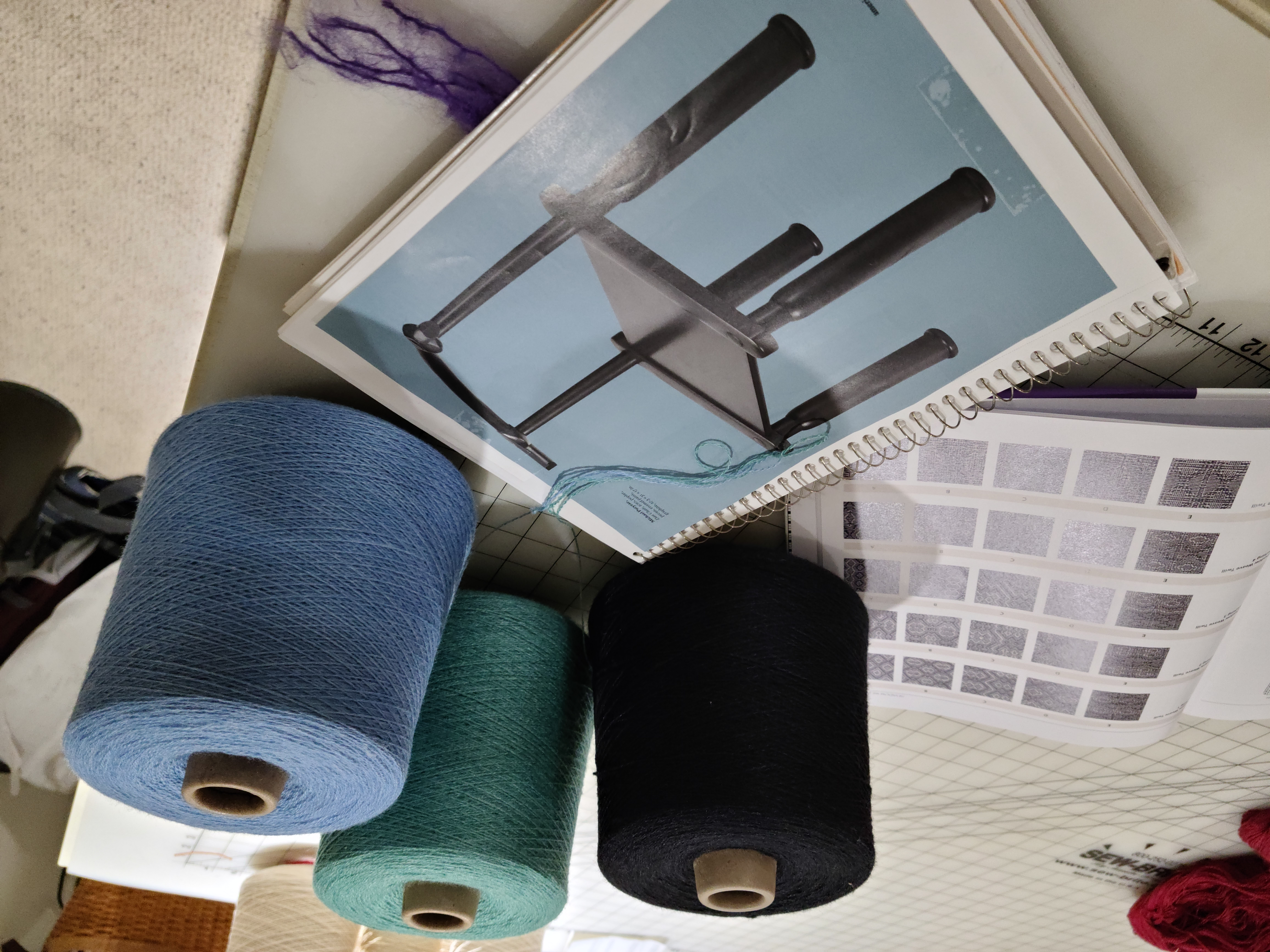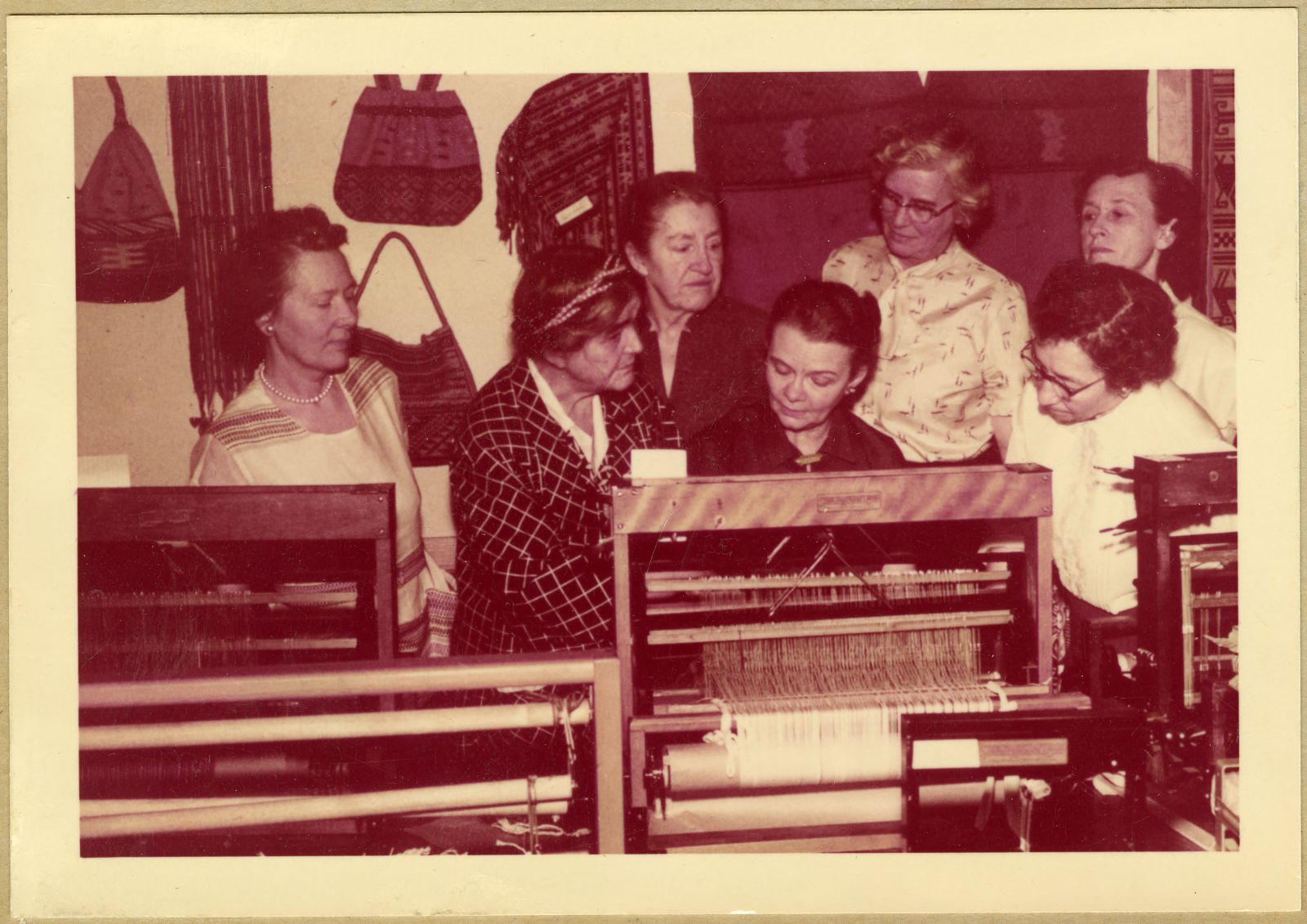For many of us, staying home has meant digging in to our crafts and dwelling in our work space. To keep us connected during the pandemic, WGM members and those beyond the Guild who inspire us are welcoming us into their studios. This week, we’re taking a peek into the studio of WGM member, Brenda Andrewson.
WGM: Please tell us about yourself and your weaving practice
BA: I am a weaver and dyer who primarily makes textiles for the home and body. I love all parts of the weaving process but particularly enjoy seeing the color interaction and pattern development while weaving. My materials vary from sturdy cottons for towels and runners to soft silks, wools, Tencel, and rayon from bamboo. I want anyone who wears one of my pieces to want to feel the fabric against their skin.
WGM: How did you get started weaving and dying?
BA: I first began weaving in the late 70’s to balance my days as an accountant with a more creative outlet. Over the years I have taken many classes and workshops at WGM as well as traveling to regional and national conferences. It appears there is always something new that piques my interest to learn. And the weaving community is very generous about sharing knowledge and ideas. It has only been lately, in retirement, that I have been able to spend more time weaving and dyeing. I split my time between suburban St. Paul and Bayfield, WI and am lucky to have a studio space in both locations.
WGM: Tell us more about the space you work in?
BA: In St Paul, my studio area is in the lower level of my home where I have areas for weaving, sewing, and dyeing all on one level. Large windows provide lots of light and a view of trees in the yard and I love that I can spend time there anytime I want. My Bayfield studio area is in the loft area of our cabin with views of Lake Superior and the woods surrounding the cabin. The view from my weaving chair is inspirational.
WGM: What kind of looms do you use?
BA: The looms in both studios are Louet Megado computer run dobby looms. A knee injury several years ago made the conversion to dobby looms necessary as I could no longer treadle with both legs, let alone crawl under the loom to tie up treadles.
WGM: What are your favorite tools to use?
BA: Because the looms are computer run, I use Fiberworks PCW to design each project. That was a real challenge at first, as I am not the most computer savvy person, but now I consider Fiberworks to be my favorite tool. I can spend many hours developing a design, playing with color choices, and doing virtual sampling. Lately I used the name draft tool in Fiberworks to develop two projects using the phrases “Vote let your Voice be Heard” and “Corona Virus Pandemic 2020” to determine the pattern. Knowing that there was a message embedded in the weaving appealed to a subversive side of me.
WGM: Where have you been finding inspiration?
BA: My favorite weave structures lately are double weave, deflected double weave, block twill and parallel (echo) weaves. My looms have many shafts and sometimes it is a challenge to fully utilize all of them, but I am learning. A recent double weave project used 32 shafts to weave 8 different blocks.
I also love to incorporate hand dyed painted warps in my weaving. Some I dye myself in my dye area and some come from the incredibly talented Kathrin Weber of Blazing Shuttles. Watching new colors come into view while weaving is inspirational, and each piece is unique due to the colors in the warp and the different weft colors used.
This past year has been a challenge in many ways, but has also given me the time to slow down, think about what I want to do with my weaving, and concentrate on what is most important to me now. I found the time to sort through and organize all my yarns, books, notebooks from old classes and workshops, and equipment. It resulted in a sizable donation to WGM, but I also found some hidden gems I had forgotten about and refreshed my memory about projects I made notes about during classes. I now have a very thick notebook with ideas for future projects.

